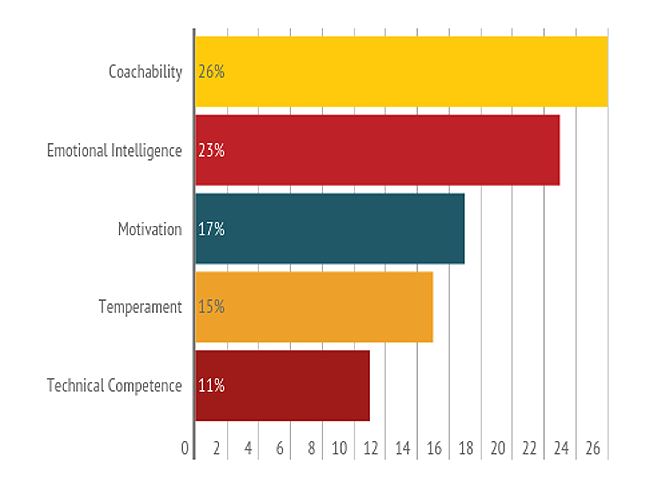
https://hbr.org/2016/11/3-ways-to-better-understand-your-emotions
by Susan David

Marion Barraud for HBR
Dealing effectively with emotions is a key leadership skill. And naming our emotions — what psychologists call labeling — is an important first step in dealing with them effectively. But it’s harder than it sounds; many of us struggle to identify what exactly we are feeling, and often times the most obvious label isn’t actually the most accurate.
There are a variety of reasons why this is so difficult: We’ve been trained to believe that strong emotions should be suppressed. We have certain (sometimes unspoken) societal and organizational rules against expressing them. Or we’ve never learned a language to accurately describe our emotions. Consider these two examples:
Neena is in a meeting with Jared and the whole time he has been saying things that make her want to explode. In addition to interrupting her at every turn, he’s reminded everyone again about that one project she worked on that failed. She’s so angry.
Mikhail gets home after a long day and sighs as he hangs up his coat. His wife asks if anything’s wrong. “I’m just stressed,” he says, pulling out laptop his to finish a report.
Anger and stress are two of the emotions we see most in the workplace — or at least those are the terms we use for them most frequently. Yet they are often masks for deeper feelings that we could and should describe in more nuanced and precise ways, so that we develop greater levels of emotional agility, a critical capability that enables us to interact more successfully with ourselves and the world (more on emotional agility in my new book of the same name, available here).
Yes, Neena may be mad, but what if she is also sad? Sad that her project failed, and maybe also anxious that that failure is going to haunt her and her career. With Jared interrupting her so frequently, that anxiety feels increasingly justified. Why didn’t the project work? And what’s going to become of her job now? All of these emotions feed into her anger, but they are also separate feelings that she should identify and address.
And what if what’s behind Mikhail’s stress is the fact that he’s just not sure he’s in the right career? Long days used to be fun — why aren’t they any more? He’s surely stressed, but what’s going on under that?
These questions open up a world of potential inquiry and answers for Neena and Mikhail. Like them, we need a more nuanced vocabulary for emotions, not just for the sake of being more precise, but because incorrectly diagnosing our emotions makes us respond incorrectly. If we think we need to attend to anger, we’ll take a different approach than if we’re handling disappointment or anxiety — or we might not address them at all.
It’s been shown that when people don’t acknowledge and address their emotions, they display lower wellbeing and more physical symptoms of stress, like headaches. There is a high cost to avoiding our feelings. On the flip side, having the right vocabulary allows us to to see the real issue at hand–to take a messy experience, understand it more clearly, and build a roadmap to address the problem.
Here are three ways to get a more accurate and precise sense of your emotions:
Broaden your emotional vocabulary
Words matter. If you’re experiencing a strong emotion, take a moment to consider what to call it. But don’t stop there: once you’ve identified it, try to come up with two more words that describe how you are feeling. You might be surprised at the breadth of your emotions — or that you’ve unearthed a deeper emotion buried beneath the more obvious one.
Here’s a vocabulary list of emotion terms; you can find much more by searching Google for any one of these.

It’s equally important to do this with “positive” emotions as well as “negative” ones. Being able to say that you are excited about a new job (not just “nervous”) or trusting of a colleague (not just “he’s nice”), for example, will help you set your intentions for the role or the relationship in a way that is more likely to lead to success down the road.
Consider the intensity of the emotion
We’re apt to leap to basic descriptors like “angry” or “stressed” even when our feelings are far less extreme. I had a client Ed (not his real name) who was struggling in his marriage; he frequently described his wife as “angry” and got angry frequently in return. But as the vocabulary chart suggests, every emotion comes in a variety of flavors. When we talked about other words for his wife’s emotions, Ed saw that there were times that she was perhaps just annoyed or impatient. This insight transformed their relationship because he could suddenly see that she wasn’t just angry all the time. This meant he could actually respond to her specific emotion and concern without getting angry himself. Similarly, it matters in your own self-assessment whether you are angry or just grumpy, mournful or just dismayed, elated or just pleased.
As you label your emotions, also rate them on a scale of 1-10. How deeply are you feeling the emotion? How urgent is it, or how strong? Does that make you choose a different set of words?
Write it out
James Pennebaker has done 40 years of research into the links between writing and emotional processing. His experiments revealed that people who write about emotionally charged episodes experience a marked increase in their physical and mental well-being. Moreover, in a study of recently laid-off workers, he found that those who delved into their feelings of humiliation, anger, anxiety, and relationship difficulties were three times more likely to have been reemployed than those in control groups.
These experiments also revealed that over time those who wrote about their feelings began to develop insights into what those feelings meant (or didn’t mean!), using phrases such as “I have learned,” “It struck me that,” “The reason that,” “I now realize,” and “I understand.” The process of writing allowed them to gain a new perspective on their emotions and to understand them and their implications more clearly.
Here’s an exercise you can use to reflect through writing. You could do this every day, but it’s particularly useful when you’re going through a tough time or a big transition, or if you’re feeling emotional turmoil—or if you’ve had a difficult experience that you think you haven’t quite processed..
- Set a timer for 20 minutes
- Using either a notebook or computer, write about your emotional experiences from the past week, month, or year.
- Don’t worry about making it perfect or readable: go where your mind takes you.
- At the end, you don’t have to save the document; the point is that those thoughts are now out of you and on the page.
You can also use these three approaches—broadening your vocabulary, noting the intensity of an emotion, and writing it out—when trying to better understand another person’s emotions. As we saw with the example of Ed and his wife, we are just as likely to mislabel someone else’s emotions as our own, with similarly complicating consequences. By more understanding what they are feeling more precisely, you will be better equipped to respond in a constructive way.
Once you understand what you are feeling, then you can better address and learn from those more accurately described emotions. (If you want to assess your own Emotional Agility, here is a link to a quiz.) If Neena addresses the sadness and regret she feels in the wake of her failed project — as well as the anxiety about what it means for her career — that is more productive than trying to figure out how to deal with her anger at Jared. And if Mikhail can recognize his own career anxiety, he can start to craft a plan to build his future more deliberately — rather than simply miring himself in more of the same work when he gets home each night.

Susan David is a founder of the Harvard/McLean Institute of Coaching and is on faculty at Harvard. She is author of Emotional Agility (Avery, 2016) based on the concept named by HBR as a Management Idea of the Year. An in-demand speaker and advisor, David has worked with the senior leadership of hundreds of major organizations, including the United Nations, Ernst & Young, and the World Economic Forum. For more information, go to www.susandavid.com or @SusanDavid_PhD.



